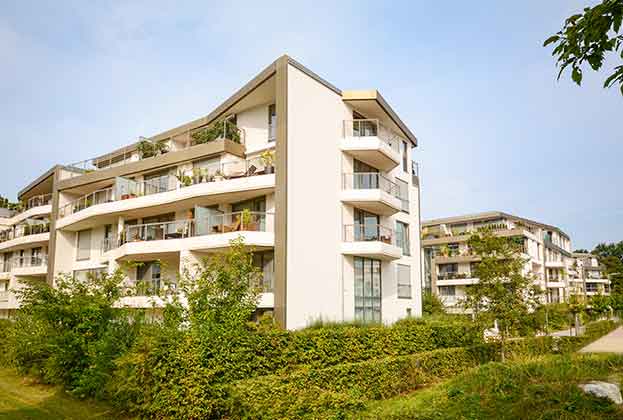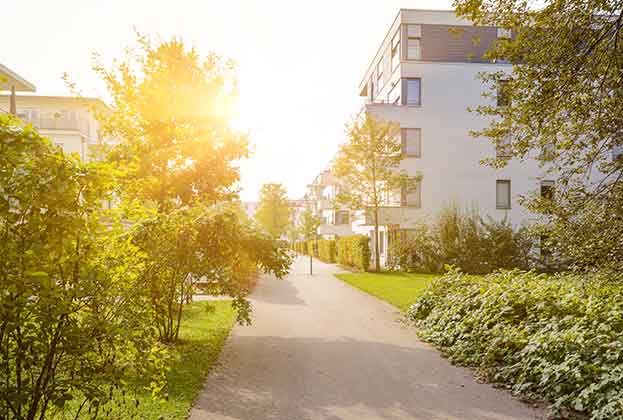In London, new build developments aiming to attract family households must look to deliver against family needs
The perception of larger flats
Generally speaking, developers favour building one and two bed flats. That’s understandable, as three and four bed flats have a higher capital value, are less attractive to investors for off-plan sales (as they have a lower yield and a smaller rental pool), and can take longer to sell. Those that are delivered are frequently done so in order to comply with planning requirements, which require a certain proportion of new build homes in a scheme to be for family living.
We often debate the design and delivery of ‘family units’ in London schemes. When confronted with the space vs affordability argument, some developers simply adhere to minimum unit sizes. Based on this research, we suggest ‘family units’ are not really delivering against family needs. How do we change the perception of these larger homes? What this new dataset affords us is an opportunity to understand the gaps of unmet demand. These missing markets we have identified in London are likely to have built up some equity, are hitting their stride in earnings and have the capacity to borrow more.
Clearly there is still demand out there for the types of larger flats we’re building now. These higher specification homes, often penthouses, are particularly appealing for the downsizer market. But building larger homes that don’t work for families means leaving a substantial pool of potential buyers unserved.
Understanding the demands and the characteristics of this ‘missing market’ can help give developers confidence there will be robust demand for their homes before they start marketing, or even before they submit planning.
Flexibility, space, convenience
Households’ priorities were already changing before Covid-19. Living under lockdown for several months has accelerated those changes, forcing emerging trends to the forefront.
Outdoor and shared amenity spaces must be versatile to support the communities that will form and grow in these new places
Savills Research
Individual needs are a function of age, stage, situation and family dynamic. Rational and practical space planning, for example, well-proportioned rooms, sufficient storage, useful kitchens and dividable space for remote working.
Market appeal is the key to the success of a scheme and this includes delivering healthy and sustainable buildings that promote well-being (for all households, not just families). Environmental Social and Governance (ESG) criteria have risen up the agenda for all households and are an increasingly important consideration. One example is designing the building so apartments don’t overheat and therefore removing the need for comfort cooling.
Families require more storage, parking, ability to divide space, easy access for buggies, outdoor amenity, and on a wish list would be indoor play space. This missing market we talk of would be more likely to buy new build in family friendly locations (near schools and parks) if the product was there.
Convenience is key. New build schemes must make life easier for their residents, not harder, through functional, practical design and thoughtful management, i.e. servicing and repair of utilities, arrangement of child care and cleaning or management of deliveries.
Outdoor and shared amenity spaces must be versatile to support the communities that will form and grow in these new places. The buildings and environment need to support healthy, sustainable lifestyles, and the marketing of these schemes must reflect each target market’s needs and priorities.
Creating a diverse community
What does a successful place look like? Developers are more than ever thinking beyond the initial measure of successful schemes as rate of sale. With the rise of Build to Rent, certainly developers are looking at some of the longer-term measures of success that will attract residents five, ten, or even 20 years from now.
There is already a large body of research demonstrating the long term value of diverse, multi-generational communities in building resilient, successful places. New build homes should be able to deliver flexible, agile and practical spaces which appeal to all, whilst also accommodating changing lifestyles. There are themes that apply to a diverse market that need to be incorporated into design now. These include home-working, sustainable living and well-being, and these needs have to be addressed whilst designing viable and deliverable buildings.
Each scheme is unique, and will require individual attention to inform its strategy with reference to its location, competition, and product, to get the sales and marketing just right. We can’t expect this report to give all the answers, but it will demonstrate the depths of analysis we go to in establishing the best advice for our clients.
Read the articles within Spotlight: The Missing Markets below.
.jpg)


.jpg)